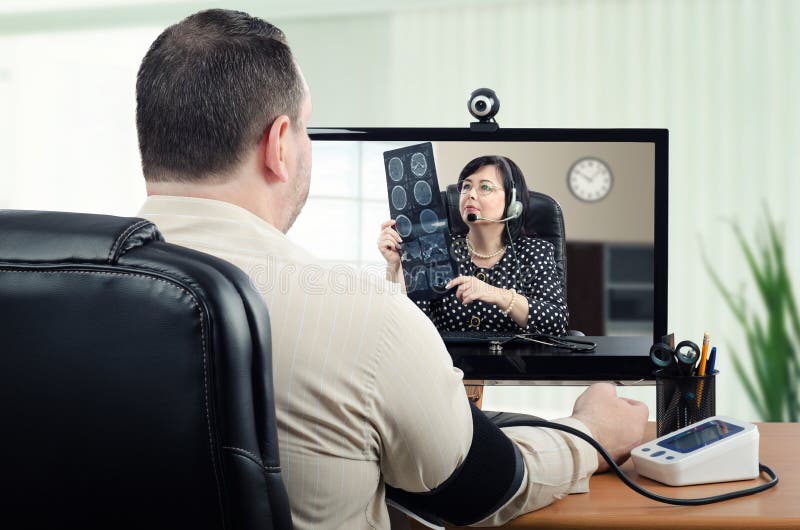Advantages of Using Teledoctors for Remote Medical Consultations
Advantages of Using Teledoctors for Remote Medical Consultations
Blog Article
Teledoctors: Bridging the Void In Between Individuals and Doctor
The appearance of teledoctors stands for a considerable change in the medical care landscape, supplying remedies to long-standing accessibility concerns dealt with by service providers and people alike. By incorporating telemedicine right into conventional practices, medical care systems can get to remote and underserved populaces, supplying critical clinical assessments without the barriers of range and traveling. This paradigm change not just enhances person interaction but likewise maximizes resource allotment for service providers. Nonetheless, the extensive fostering of teledoctors increases vital concerns concerning the sustainability of such methods and the effects for future healthcare distribution. What challenges exist ahead in ensuring this version's effectiveness and equity?
Rise of Telemedicine

The rise of telemedicine is also sustained by the requirement for economical health care. Healthcare systems globally are under stress to lower expenditures while preserving quality care, and telemedicine supplies a viable solution. By decreasing the demand for physical sees, telemedicine minimizes overhead prices for medical care facilities and ultimately decreases the monetary concern on patients.
In Addition, the COVID-19 pandemic functioned as a catalyst, increasing the fostering of telemedicine practices. Social distancing actions and the requirement to minimize direct exposure risk required a shift in the direction of remote examinations, prompting governing bodies to adapt and sustain telehealth services. This change has not only tested telemedicine's efficiency yet additionally its potential to develop as a staple part of modern-day health care systems.
Benefits for Clients
Largely, telemedicine boosts access, allowing clients in remote or underserved areas to seek advice from medical care providers without the need for substantial traveling. Telemedicine likewise uses individuals the ease of obtaining clinical recommendations and therapy from the convenience of their homes, minimizing the time and cost associated with taking a trip to a medical care center.
Additionally, telemedicine sustains continuity of care by helping with regular follow-ups and monitoring, which are essential for taking care of chronic conditions. Patients can quickly set up consultations and gain access to health care services outside traditional office hours, suiting their active way of lives. This versatility leads to boosted individual interaction and adherence to treatment strategies, potentially leading to far better health end results.
Furthermore, telemedicine can help mitigate the threat of infection transmission, an issue heightened by the COVID-19 pandemic. By decreasing the requirement for in-person brows through, individuals can avoid congested waiting spaces and reduce direct exposure to contagious ailments. Eventually, telemedicine empowers patients by offering prompt, efficient, and individualized healthcare solutions.
Advantages for Providers
For doctor, telemedicine supplies considerable advantages that boost the effectiveness and reach of their technique. By leveraging digital innovation, suppliers can expand their solutions to a broader market, including those in underserved or remote areas. This not only relieves geographical barriers resource however also maximizes individual retention and acquisition by making medical care much more obtainable.
With telemedicine, the demand for physical space diminishes, allowing companies to save on real estate and functional expenditures. This adaptability can lead to boosted patient assessments per day, therefore increasing revenue capacity.
Telemedicine likewise promotes a much more collaborative environment for healthcare service providers. teledoctors. It enables smooth sharing of person details among specialists, boosting diagnostic accuracy and therapy end results. Furthermore, digital systems can incorporate with electronic health and wellness documents (EHRs), improving data precision and improving administrative tasks
In addition, telemedicine improves individual fulfillment, which is critical for supplier track record and success. By offering timely and practical care, companies can enhance patient commitment and engagement, better strengthening the provider-patient connection.
Overcoming Obstacles
While telemedicine provides many advantages for healthcare suppliers, it additionally presents challenges that need cautious factor to consider. Healthcare companies have to stick to stringent policies like HIPAA to safeguard delicate info, therefore calling for financial investment in secure platforms and ongoing personnel training. teledoctors.
One more difficulty is the digital divide, which can impede access to telemedicine services. Not all individuals have equal access to the needed technology or internet connectivity, particularly those in underserved or country locations. This disparity can worsen existing medical care inequalities, making it essential for suppliers to check out different options, such as collaborations with neighborhood organizations, to connect this space.
Moreover, there are restrictions in conducting health examinations remotely. Certain conditions call for in-person analysis, highlighting the need for a hybrid model that incorporates telemedicine with typical brows through. When telemedicine is appropriate and making certain seamless changes between virtual and in-person care., providers have to navigate these challenges by establishing protocols to recognize.
Future of Health Care
The future of healthcare is poised for a transformative advancement, driven by the rapid integration of technology and advancement. This not just enhances client comfort yet also broadens access to medical care, specifically in rural and underserved locations.
Man-made intelligence (AI) and maker understanding are also readied to play critical roles. These technologies read the article can examine large quantities of information, providing predictive insights into client health and wellness, boosting diagnostic precision, and individualizing therapy strategies. AI-driven tools can increase doctor' capabilities, leading to more informed decision-making and better patient outcomes.
In addition, wearable technology and Web of Clinical Points (IoMT) devices are reinventing person engagement and proactive health and wellness administration. These tools allow constant health and wellness surveillance, enabling very early discovery of prompt interventions and potential concerns.
As these modern technologies remain to breakthrough, they promise to produce an extra effective, accessible, and patient-centric medical care system, eventually linking the gap in between clients and health care providers. - teledoctors
Conclusion
Teledoctors are transforming healthcare by dramatically improving ease of access and effectiveness with remote assessments. This development supports patients in underserved locations by supplying prompt clinical guidance without requiring physical gos to, thus boosting person interaction and continuity of care. Doctor profit from a lot more reliable time monitoring and improved partnership opportunities. Regardless of difficulties such as regulatory concerns and technological obstacles, the future of health care shows up reliable and increasingly inclusive as a result of the integration of telemedicine into standard treatment models.

As telemedicine continues to reshape health care distribution, clients stand to obtain visit our website considerably from this makeover. Mainly, telemedicine boosts accessibility, enabling people in remote or underserved locations to consult health care carriers without the need for extensive traveling. Telemedicine additionally offers clients the ease of receiving medical recommendations and therapy from the comfort of their homes, reducing the time and cost associated with traveling to a health care center.
Ultimately, telemedicine encourages patients by giving timely, efficient, and customized health care solutions.
Report this page